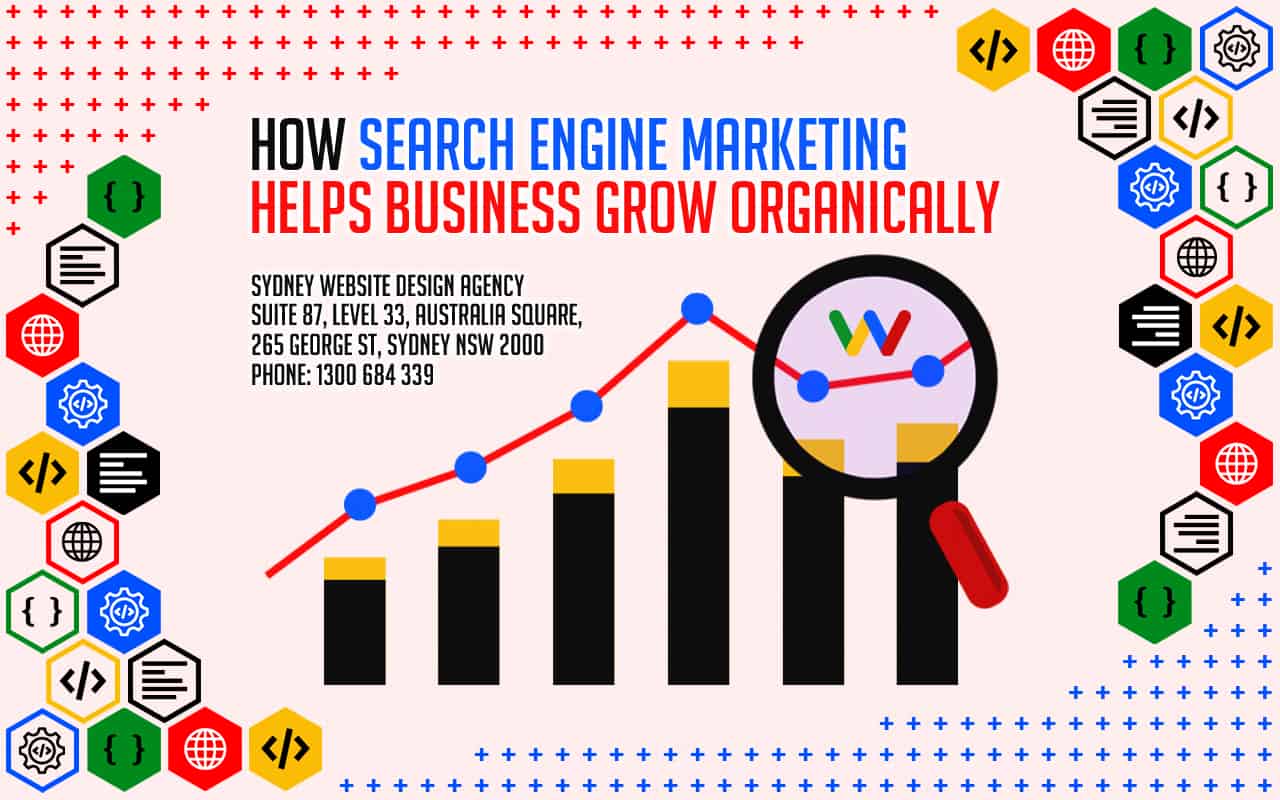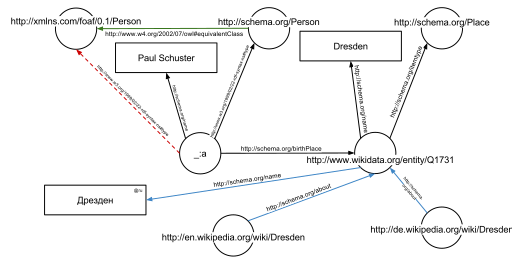

evergreen keywords"Evergreen keywords remain consistently relevant over time. By focusing on these terms, you can generate ongoing traffic without constantly updating content."
Expert SEO services"Expert SEO services offer in-depth knowledge and advanced techniques to improve website performance. Best SEO Sydney Agency. Best SEO Agency Sydney Australia.
FAQ keywordsFAQ keywords are search queries that reflect common questions about your products or industry. Answering these questions directly in your content helps you rank for featured snippets and drive more traffic.
Forum link building"Forum link building involves participating in online forums and discussion boards relevant to your industry. By providing valuable insights and linking to your content when appropriate, you can drive traffic and gain backlinks from active community members."
Forum profile links"Forum profile links are backlinks added to user profiles on discussion boards.
geo-targeted keywords"Geo-targeted keywords reference specific regions, states, or countries. Using these terms helps you reach audiences in particular locations, making your content more relevant to their needs."
Google Analytics active users"Active users in Google Analytics are the number of unique visitors interacting with your site within a given time frame. Tracking active users helps you understand traffic trends, measure user retention, and assess the impact of your marketing campaigns."
Google Analytics advanced segments"Advanced segments in Google Analytics let you create custom filters to analyze specific subsets of data. By using advanced segments, you can focus on particular user groups or behaviors, gaining more granular insights into your sites performance."
Google Analytics attribution models"Attribution models in Google Analytics determine how credit for conversions is assigned to different marketing channels. By analyzing attribution models, you can understand which touchpoints drive the most value and allocate your budget more effectively."
SEO Packages Sydney .

Google Analytics audiences"Audiences in Google Analytics are user segments based on behavior, demographics, or other criteria. By creating audiences, you can tailor marketing campaigns, personalize website content, and improve user experience."
Google Analytics behavior flow"Behavior flow reports in Google Analytics visualize how users navigate through your site.
Google Analytics bounce rate"Bounce rate in Google Analytics shows the percentage of users who leave your site after viewing only one page. A high bounce rate can indicate issues with user experience, content relevance, or page load speed, highlighting areas for optimization."
Google Analytics campaign tracking"Campaign tracking in Google Analytics measures the performance of marketing campaigns. By tagging links with UTM parameters and analyzing campaign data, you can identify which efforts generate the most traffic and conversions."
Google Analytics channel performance"Channel performance reports in Google Analytics provide insights into how different traffic sourcessuch as organic search, paid ads, or social mediacontribute to your overall site performance. This data helps you focus your efforts on the most effective channels."
Google Analytics cohort analysis"Cohort analysis in Google Analytics groups users by shared characteristics, such as their first visit date. By analyzing cohorts, you can track user behavior over time, measure retention rates, and identify patterns that drive long-term engagement."


Google Analytics conversions"Conversions in Google Analytics represent completed actions that are valuable to your business, such as purchases or form submissions. Tracking conversions helps you measure the effectiveness of your marketing efforts and identify opportunities for improvement."
Google Analytics cross-domain tracking"Cross-domain tracking in Google Analytics enables you to track user behavior across multiple websites. By properly configuring tracking code, you can maintain a unified view of user interactions and gain a clearer picture of your audiences journey."
Google Analytics custom alerts"Custom alerts in Google Analytics notify you of significant changes in your sites performance. By setting up alerts, you can quickly respond to traffic spikes, unexpected drops, or issues that need immediate attention."
Google Analytics custom dimensions"Custom dimensions in Google Analytics let you track additional data points not included by default, such as user roles or product categories. Adding custom dimensions provides more granular insights, helping you better understand your audience and their behavior."
Google Analytics custom dimensions"Custom dimensions in Google Analytics let you collect additional data points, such as membership levels or content categories. By leveraging custom dimensions, you can segment your audience more effectively and gain deeper insights into user behavior."
Google Analytics custom reports"Custom reports in Google Analytics let you create tailored views of your data. By selecting specific dimensions and metrics, you can generate reports that focus on the KPIs most relevant to your business goals."

A web directory or link directory is an online list or catalog of websites. That is, it is a directory on the World Wide Web of (all or part of) the World Wide Web. Historically, directories typically listed entries on people or businesses, and their contact information; such directories are still in use today. A web directory includes entries about websites, including links to those websites, organized into categories and subcategories.[1][2][3] Besides a link, each entry may include the title of the website, and a description of its contents. In most web directories, the entries are about whole websites, rather than individual pages within them (called "deep links"). Websites are often limited to inclusion in only a few categories.
There are two ways to find information on the Web: by searching or browsing. Web directories provide links in a structured list to make browsing easier. Many web directories combine searching and browsing by providing a search engine to search the directory. Unlike search engines, which base results on a database of entries gathered automatically by web crawler, most web directories are built manually by human editors. Many web directories allow site owners to submit their site for inclusion, and have editors review submissions for fitness.
Web directories may be general in scope, or limited to particular subjects or fields. Entries may be listed for free, or by paid submission (meaning the site owner must pay to have his or her website listed).
RSS directories are similar to web directories, but contain collections of RSS feeds, instead of links to websites.
During the early development of the web, there was a list of web servers edited by Tim Berners-Lee and hosted on the CERN webserver. One historical snapshot from 1992 remains.[4] He also created the World Wide Web Virtual Library, which is the oldest web directory.[5]
Most of the directories are general in on scope and list websites across a wide range of categories, regions and languages. But some niche directories focus on restricted regions, single languages, or specialist sectors. For example, there are shopping directories that specialize in the listing of retail e-commerce sites.
Examples of well-known general web directories are Yahoo! Directory (shut down at the end of 2014) and DMOZ (shut down on March 14, 2017). DMOZ was significant due to its extensive categorization and large number of listings and its free availability for use by other directories and search engines.[6]
However, a debate over the quality of directories and databases still continues, as search engines use DMOZ's content without real integration, and some experiment using clustering.
There have been many attempts to make building web directories easier, such as using automated submission of related links by script, or any number of available PHP portals and programs. Recently, social software techniques have spawned new efforts of categorization, with Amazon.com adding tagging to their product pages.
Directories have various features in their listings, often depending upon the price paid for inclusion:
rel="nofollow" attribute associated with the link, meaning search engines will give no weight to the linkA human-edited directory is created and maintained by editors who add links based on the policies particular to that directory. Human-edited directories are often targeted by SEOs on the basis that links from reputable sources will improve rankings in the major search engines. Some directories may prevent search engines from rating a displayed link by using redirects, nofollow attributes, or other techniques. Many human-edited directories, including DMOZ, World Wide Web Virtual Library, Business.com and Jasmine Directory, are edited by volunteers, who are often experts in particular categories. These directories are sometimes criticized due to long delays in approving submissions, or for rigid organizational structures and disputes among volunteer editors.
In response to these criticisms, some volunteer-edited directories have adopted wiki technology, to allow broader community participation in editing the directory (at the risk of introducing lower-quality, less objective entries).
Another direction taken by some web directories is the paid for inclusion model. This method enables the directory to offer timely inclusion for submissions and generally fewer listings as a result of the paid model. They often offer additional listing options to further enhance listings, including features listings and additional links to inner pages of the listed website. These options typically have an additional fee associated but offer significant help and visibility to sites and/or their inside pages.
Today submission of websites to web directories is considered a common SEO (search engine optimization) technique to get back-links for the submitted website. One distinctive feature of 'directory submission' is that it cannot be fully automated like search engine submissions. Manual directory submission is a tedious and time-consuming job and is often outsourced by webmasters.
Bid for Position directories, also known as bidding web directories, are paid-for-inclusion web directories where the listings of websites in the directory are ordered according to their bid amount. They are special in that the more a person pays, the higher up the list of websites in the directory they go. With the higher listing, the website becomes more visible and increases the chances that visitors who browse the directory will click on the listing.
Web directories will often make themselves accessing by more and more URLs by acquiring the domain registrations of defunct websites as soon as they expire, a practice known as Domain drop catching.
Reciprocal links may not help with competitive keyword rankings, but that does not mean you should avoid them when they make sound business sense. What you should definitely avoid are manipulative reciprocal linking schemes like automated link trading programs and three-way links or four-way links.
Local search may refer to:

| Semantics | ||||||||
|---|---|---|---|---|---|---|---|---|
|
||||||||
| Semantics of programming languages |
||||||||
|
||||||||
The Semantic Web, sometimes known as Web 3.0 (not to be confused with Web3), is an extension of the World Wide Web through standards[1] set by the World Wide Web Consortium (W3C). The goal of the Semantic Web is to make Internet data machine-readable.
To enable the encoding of semantics with the data, technologies such as Resource Description Framework (RDF)[2] and Web Ontology Language (OWL)[3] are used. These technologies are used to formally represent metadata. For example, ontology can describe concepts, relationships between entities, and categories of things. These embedded semantics offer significant advantages such as reasoning over data and operating with heterogeneous data sources.[4] These standards promote common data formats and exchange protocols on the Web, fundamentally the RDF. According to the W3C, "The Semantic Web provides a common framework that allows data to be shared and reused across application, enterprise, and community boundaries."[5] The Semantic Web is therefore regarded as an integrator across different content and information applications and systems.
The term was coined by Tim Berners-Lee for a web of data (or data web)[6] that can be processed by machines[7]—that is, one in which much of the meaning is machine-readable. While its critics have questioned its feasibility, proponents argue that applications in library and information science, industry, biology and human sciences research have already proven the validity of the original concept.[8]
Berners-Lee originally expressed his vision of the Semantic Web in 1999 as follows:
I have a dream for the Web [in which computers] become capable of analyzing all the data on the Web – the content, links, and transactions between people and computers. A "Semantic Web", which makes this possible, has yet to emerge, but when it does, the day-to-day mechanisms of trade, bureaucracy and our daily lives will be handled by machines talking to machines. The "intelligent agents" people have touted for ages will finally materialize.[9]
The 2001 Scientific American article by Berners-Lee, Hendler, and Lassila described an expected evolution of the existing Web to a Semantic Web.[10] In 2006, Berners-Lee and colleagues stated that: "This simple idea…remains largely unrealized".[11] In 2013, more than four million Web domains (out of roughly 250 million total) contained Semantic Web markup.[12]
In the following example, the text "Paul Schuster was born in Dresden" on a website will be annotated, connecting a person with their place of birth. The following HTML fragment shows how a small graph is being described, in RDFa-syntax using a schema.org vocabulary and a Wikidata ID:
<div vocab="https://schema.org/" typeof="Person">
<span property="name">Paul Schuster</span> was born in
<span property="birthPlace" typeof="Place" href="https://www.wikidata.org/entity/Q1731">
<span property="name">Dresden</span>.
</span>
</div>

The example defines the following five triples (shown in Turtle syntax). Each triple represents one edge in the resulting graph: the first element of the triple (the subject) is the name of the node where the edge starts, the second element (the predicate) the type of the edge, and the last and third element (the object) either the name of the node where the edge ends or a literal value (e.g. a text, a number, etc.).
_:a <https://www.w3.org/1999/02/22-rdf-syntax-ns#type> <https://schema.org/Person> .
_:a <https://schema.org/name> "Paul Schuster" .
_:a <https://schema.org/birthPlace> <https://www.wikidata.org/entity/Q1731> .
<https://www.wikidata.org/entity/Q1731> <https://schema.org/itemtype> <https://schema.org/Place> .
<https://www.wikidata.org/entity/Q1731> <https://schema.org/name> "Dresden" .
The triples result in the graph shown in the given figure.

One of the advantages of using Uniform Resource Identifiers (URIs) is that they can be dereferenced using the HTTP protocol. According to the so-called Linked Open Data principles, such a dereferenced URI should result in a document that offers further data about the given URI. In this example, all URIs, both for edges and nodes (e.g. http://schema.org/Person, http://schema.org/birthPlace, http://www.wikidata.org/entity/Q1731) can be dereferenced and will result in further RDF graphs, describing the URI, e.g. that Dresden is a city in Germany, or that a person, in the sense of that URI, can be fictional.
The second graph shows the previous example, but now enriched with a few of the triples from the documents that result from dereferencing https://schema.org/Person (green edge) and https://www.wikidata.org/entity/Q1731 (blue edges).
Additionally to the edges given in the involved documents explicitly, edges can be automatically inferred: the triple
_:a <https://www.w3.org/1999/02/22-rdf-syntax-ns#type> <http://schema.org/Person> .
from the original RDFa fragment and the triple
<https://schema.org/Person> <http://www.w3.org/2002/07/owl#equivalentClass> <http://xmlns.com/foaf/0.1/Person> .
from the document at https://schema.org/Person (green edge in the figure) allow to infer the following triple, given OWL semantics (red dashed line in the second Figure):
_:a <https://www.w3.org/1999/02/22-rdf-syntax-ns#type> <http://xmlns.com/foaf/0.1/Person> .
The concept of the semantic network model was formed in the early 1960s by researchers such as the cognitive scientist Allan M. Collins, linguist Ross Quillian and psychologist Elizabeth F. Loftus as a form to represent semantically structured knowledge. When applied in the context of the modern internet, it extends the network of hyperlinked human-readable web pages by inserting machine-readable metadata about pages and how they are related to each other. This enables automated agents to access the Web more intelligently and perform more tasks on behalf of users. The term "Semantic Web" was coined by Tim Berners-Lee,[7] the inventor of the World Wide Web and director of the World Wide Web Consortium ("W3C"), which oversees the development of proposed Semantic Web standards. He defines the Semantic Web as "a web of data that can be processed directly and indirectly by machines".
Many of the technologies proposed by the W3C already existed before they were positioned under the W3C umbrella. These are used in various contexts, particularly those dealing with information that encompasses a limited and defined domain, and where sharing data is a common necessity, such as scientific research or data exchange among businesses. In addition, other technologies with similar goals have emerged, such as microformats.
Many files on a typical computer can be loosely divided into either human-readable documents, or machine-readable data. Examples of human-readable document files are mail messages, reports, and brochures. Examples of machine-readable data files are calendars, address books, playlists, and spreadsheets, which are presented to a user using an application program that lets the files be viewed, searched, and combined.
Currently, the World Wide Web is based mainly on documents written in Hypertext Markup Language (HTML), a markup convention that is used for coding a body of text interspersed with multimedia objects such as images and interactive forms. Metadata tags provide a method by which computers can categorize the content of web pages. In the examples below, the field names "keywords", "description" and "author" are assigned values such as "computing", and "cheap widgets for sale" and "John Doe".
<meta name="keywords" content="computing, computer studies, computer" />
<meta name="description" content="Cheap widgets for sale" />
<meta name="author" content="John Doe" />
Because of this metadata tagging and categorization, other computer systems that want to access and share this data can easily identify the relevant values.
With HTML and a tool to render it (perhaps web browser software, perhaps another user agent), one can create and present a page that lists items for sale. The HTML of this catalog page can make simple, document-level assertions such as "this document's title is 'Widget Superstore'", but there is no capability within the HTML itself to assert unambiguously that, for example, item number X586172 is an Acme Gizmo with a retail price of €199, or that it is a consumer product. Rather, HTML can only say that the span of text "X586172" is something that should be positioned near "Acme Gizmo" and "€199", etc. There is no way to say "this is a catalog" or even to establish that "Acme Gizmo" is a kind of title or that "€199" is a price. There is also no way to express that these pieces of information are bound together in describing a discrete item, distinct from other items perhaps listed on the page.
Semantic HTML refers to the traditional HTML practice of markup following intention, rather than specifying layout details directly. For example, the use of <em> denoting "emphasis" rather than <i>, which specifies italics. Layout details are left up to the browser, in combination with Cascading Style Sheets. But this practice falls short of specifying the semantics of objects such as items for sale or prices.
Microformats extend HTML syntax to create machine-readable semantic markup about objects including people, organizations, events and products.[13] Similar initiatives include RDFa, Microdata and Schema.org.
The Semantic Web takes the solution further. It involves publishing in languages specifically designed for data: Resource Description Framework (RDF), Web Ontology Language (OWL), and Extensible Markup Language (XML). HTML describes documents and the links between them. RDF, OWL, and XML, by contrast, can describe arbitrary things such as people, meetings, or airplane parts.
These technologies are combined in order to provide descriptions that supplement or replace the content of Web documents. Thus, content may manifest itself as descriptive data stored in Web-accessible databases,[14] or as markup within documents (particularly, in Extensible HTML (XHTML) interspersed with XML, or, more often, purely in XML, with layout or rendering cues stored separately). The machine-readable descriptions enable content managers to add meaning to the content, i.e., to describe the structure of the knowledge we have about that content. In this way, a machine can process knowledge itself, instead of text, using processes similar to human deductive reasoning and inference, thereby obtaining more meaningful results and helping computers to perform automated information gathering and research.
An example of a tag that would be used in a non-semantic web page:
<item>blog</item>
Encoding similar information in a semantic web page might look like this:
<item rdf:about="https://example.org/semantic-web/">Semantic Web</item>
Tim Berners-Lee calls the resulting network of Linked Data the Giant Global Graph, in contrast to the HTML-based World Wide Web. Berners-Lee posits that if the past was document sharing, the future is data sharing. His answer to the question of "how" provides three points of instruction. One, a URL should point to the data. Two, anyone accessing the URL should get data back. Three, relationships in the data should point to additional URLs with data.
Tags, including hierarchical categories and tags that are collaboratively added and maintained (e.g. with folksonomies) can be considered part of, of potential use to or a step towards the semantic Web vision.[15][16][17]
Unique identifiers, including hierarchical categories and collaboratively added ones, analysis tools and metadata, including tags, can be used to create forms of semantic webs – webs that are to a certain degree semantic.[18] In particular, such has been used for structuring scientific research i.a. by research topics and scientific fields by the projects OpenAlex,[19][20][21] Wikidata and Scholia which are under development and provide APIs, Web-pages, feeds and graphs for various semantic queries.
Tim Berners-Lee has described the Semantic Web as a component of Web 3.0.[22]
People keep asking what Web 3.0 is. I think maybe when you've got an overlay of scalable vector graphics – everything rippling and folding and looking misty – on Web 2.0 and access to a semantic Web integrated across a huge space of data, you'll have access to an unbelievable data resource …
— Tim Berners-Lee, 2006
"Semantic Web" is sometimes used as a synonym for "Web 3.0",[23] though the definition of each term varies.
The next generation of the Web is often termed Web 4.0, but its definition is not clear. According to some sources, it is a Web that involves artificial intelligence,[24] the internet of things, pervasive computing, ubiquitous computing and the Web of Things among other concepts.[25] According to the European Union, Web 4.0 is "the expected fourth generation of the World Wide Web. Using advanced artificial and ambient intelligence, the internet of things, trusted blockchain transactions, virtual worlds and XR capabilities, digital and real objects and environments are fully integrated and communicate with each other, enabling truly intuitive, immersive experiences, seamlessly blending the physical and digital worlds".[26]
Some of the challenges for the Semantic Web include vastness, vagueness, uncertainty, inconsistency, and deceit. Automated reasoning systems will have to deal with all of these issues in order to deliver on the promise of the Semantic Web.
This list of challenges is illustrative rather than exhaustive, and it focuses on the challenges to the "unifying logic" and "proof" layers of the Semantic Web. The World Wide Web Consortium (W3C) Incubator Group for Uncertainty Reasoning for the World Wide Web[27] (URW3-XG) final report lumps these problems together under the single heading of "uncertainty".[28] Many of the techniques mentioned here will require extensions to the Web Ontology Language (OWL) for example to annotate conditional probabilities. This is an area of active research.[29]
Standardization for Semantic Web in the context of Web 3.0 is under the care of W3C.[30]
The term "Semantic Web" is often used more specifically to refer to the formats and technologies that enable it.[5] The collection, structuring and recovery of linked data are enabled by technologies that provide a formal description of concepts, terms, and relationships within a given knowledge domain. These technologies are specified as W3C standards and include:
The Semantic Web Stack illustrates the architecture of the Semantic Web. The functions and relationships of the components can be summarized as follows:[31]
Well-established standards:
Not yet fully realized:
The intent is to enhance the usability and usefulness of the Web and its interconnected resources by creating semantic web services, such as:
<meta> tags used in today's Web pages to supply information for Web search engines using web crawlers). This could be machine-understandable information about the human-understandable content of the document (such as the creator, title, description, etc.) or it could be purely metadata representing a set of facts (such as resources and services elsewhere on the site). Note that anything that can be identified with a Uniform Resource Identifier (URI) can be described, so the semantic web can reason about animals, people, places, ideas, etc. There are four semantic annotation formats that can be used in HTML documents; Microformat, RDFa, Microdata and JSON-LD.[35] Semantic markup is often generated automatically, rather than manually.
Such services could be useful to public search engines, or could be used for knowledge management within an organization. Business applications include:
In a corporation, there is a closed group of users and the management is able to enforce company guidelines like the adoption of specific ontologies and use of semantic annotation. Compared to the public Semantic Web there are lesser requirements on scalability and the information circulating within a company can be more trusted in general; privacy is less of an issue outside of handling of customer data.
Critics question the basic feasibility of a complete or even partial fulfillment of the Semantic Web, pointing out both difficulties in setting it up and a lack of general-purpose usefulness that prevents the required effort from being invested. In a 2003 paper, Marshall and Shipman point out the cognitive overhead inherent in formalizing knowledge, compared to the authoring of traditional web hypertext:[46]
While learning the basics of HTML is relatively straightforward, learning a knowledge representation language or tool requires the author to learn about the representation's methods of abstraction and their effect on reasoning. For example, understanding the class-instance relationship, or the superclass-subclass relationship, is more than understanding that one concept is a "type of" another concept. [...] These abstractions are taught to computer scientists generally and knowledge engineers specifically but do not match the similar natural language meaning of being a "type of" something. Effective use of such a formal representation requires the author to become a skilled knowledge engineer in addition to any other skills required by the domain. [...] Once one has learned a formal representation language, it is still often much more effort to express ideas in that representation than in a less formal representation [...]. Indeed, this is a form of programming based on the declaration of semantic data and requires an understanding of how reasoning algorithms will interpret the authored structures.
According to Marshall and Shipman, the tacit and changing nature of much knowledge adds to the knowledge engineering problem, and limits the Semantic Web's applicability to specific domains. A further issue that they point out are domain- or organization-specific ways to express knowledge, which must be solved through community agreement rather than only technical means.[46] As it turns out, specialized communities and organizations for intra-company projects have tended to adopt semantic web technologies greater than peripheral and less-specialized communities.[47] The practical constraints toward adoption have appeared less challenging where domain and scope is more limited than that of the general public and the World-Wide Web.[47]
Finally, Marshall and Shipman see pragmatic problems in the idea of (Knowledge Navigator-style) intelligent agents working in the largely manually curated Semantic Web:[46]
In situations in which user needs are known and distributed information resources are well described, this approach can be highly effective; in situations that are not foreseen and that bring together an unanticipated array of information resources, the Google approach is more robust. Furthermore, the Semantic Web relies on inference chains that are more brittle; a missing element of the chain results in a failure to perform the desired action, while the human can supply missing pieces in a more Google-like approach. [...] cost-benefit tradeoffs can work in favor of specially-created Semantic Web metadata directed at weaving together sensible well-structured domain-specific information resources; close attention to user/customer needs will drive these federations if they are to be successful.
Cory Doctorow's critique ("metacrap")[48] is from the perspective of human behavior and personal preferences. For example, people may include spurious metadata into Web pages in an attempt to mislead Semantic Web engines that naively assume the metadata's veracity. This phenomenon was well known with metatags that fooled the Altavista ranking algorithm into elevating the ranking of certain Web pages: the Google indexing engine specifically looks for such attempts at manipulation. Peter Gärdenfors and Timo Honkela point out that logic-based semantic web technologies cover only a fraction of the relevant phenomena related to semantics.[49][50]
Enthusiasm about the semantic web could be tempered by concerns regarding censorship and privacy. For instance, text-analyzing techniques can now be easily bypassed by using other words, metaphors for instance, or by using images in place of words. An advanced implementation of the semantic web would make it much easier for governments to control the viewing and creation of online information, as this information would be much easier for an automated content-blocking machine to understand. In addition, the issue has also been raised that, with the use of FOAF files and geolocation meta-data, there would be very little anonymity associated with the authorship of articles on things such as a personal blog. Some of these concerns were addressed in the "Policy Aware Web" project[51] and is an active research and development topic.
Another criticism of the semantic web is that it would be much more time-consuming to create and publish content because there would need to be two formats for one piece of data: one for human viewing and one for machines. However, many web applications in development are addressing this issue by creating a machine-readable format upon the publishing of data or the request of a machine for such data. The development of microformats has been one reaction to this kind of criticism. Another argument in defense of the feasibility of semantic web is the likely falling price of human intelligence tasks in digital labor markets, such as Amazon's Mechanical Turk.[citation needed]
Specifications such as eRDF and RDFa allow arbitrary RDF data to be embedded in HTML pages. The GRDDL (Gleaning Resource Descriptions from Dialects of Language) mechanism allows existing material (including microformats) to be automatically interpreted as RDF, so publishers only need to use a single format, such as HTML.
The first research group explicitly focusing on the Corporate Semantic Web was the ACACIA team at INRIA-Sophia-Antipolis, founded in 2002. Results of their work include the RDF(S) based Corese[52] search engine, and the application of semantic web technology in the realm of distributed artificial intelligence for knowledge management (e.g. ontologies and multi-agent systems for corporate semantic Web) [53] and E-learning.[54]
Since 2008, the Corporate Semantic Web research group, located at the Free University of Berlin, focuses on building blocks: Corporate Semantic Search, Corporate Semantic Collaboration, and Corporate Ontology Engineering.[55]
Ontology engineering research includes the question of how to involve non-expert users in creating ontologies and semantically annotated content[56] and for extracting explicit knowledge from the interaction of users within enterprises.
Tim O'Reilly, who coined the term Web 2.0, proposed a long-term vision of the Semantic Web as a web of data, where sophisticated applications are navigating and manipulating it.[57] The data web transforms the World Wide Web from a distributed file system into a distributed database.[58]
cite journal: Cite journal requires |journal= (help)cite book: |work= ignored (help)
A local SEO agency specializes in improving a business's visibility within a specific geographic area. They focus on optimizing local citations, managing Google My Business profiles, and targeting location-based keywords to attract nearby customers.
SEO, or search engine optimisation, means improving your website's structure, content, and overall performance to rank higher in search results. This leads to more organic traffic, increased brand visibility, and better conversion rates, ultimately supporting your business's growth.